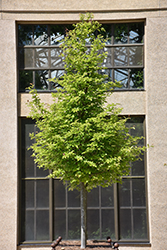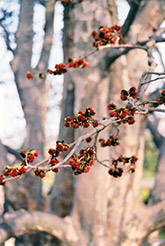Height: 30 feet
Spread: 30 feet
Sunlight:
![]()
Hardiness Zone: 5
Other Names: Persian Ironwood
Description:
A singly excellent small tree with many ornamental attributes; very neat, upright habit of growth, interesting mottled bark and superb blend of fall colors ranging from yellow to orange to red, holding late into fall; very adaptable to diverse conditions
Ornamental Features
Persian Parrotia has forest green deciduous foliage which emerges burgundy in spring on a tree with an oval habit of growth. The serrated oval leaves turn an outstanding orange in the fall. The peeling brown bark adds an interesting dimension to the landscape.
Landscape Attributes
Persian Parrotia is a deciduous tree with a shapely oval form. Its average texture blends into the landscape, but can be balanced by one or two finer or coarser trees or shrubs for an effective composition.
This is a relatively low maintenance tree, and is best pruned in late winter once the threat of extreme cold has passed. It has no significant negative characteristics.
Persian Parrotia is recommended for the following landscape applications;
- Accent
- Shade
Planting & Growing
Persian Parrotia will grow to be about 30 feet tall at maturity, with a spread of 30 feet. It has a low canopy with a typical clearance of 4 feet from the ground, and should not be planted underneath power lines. It grows at a medium rate, and under ideal conditions can be expected to live for 80 years or more.
This tree should only be grown in full sunlight. It is very adaptable to both dry and moist locations, and should do just fine under average home landscape conditions. It is not particular as to soil type or pH. It is highly tolerant of urban pollution and will even thrive in inner city environments. This species is not originally from North America.


